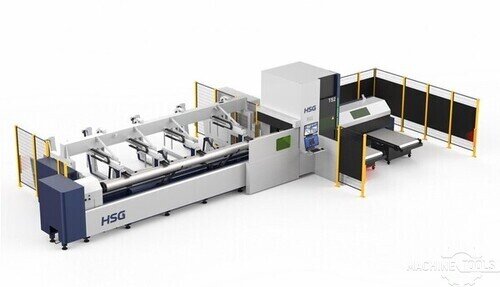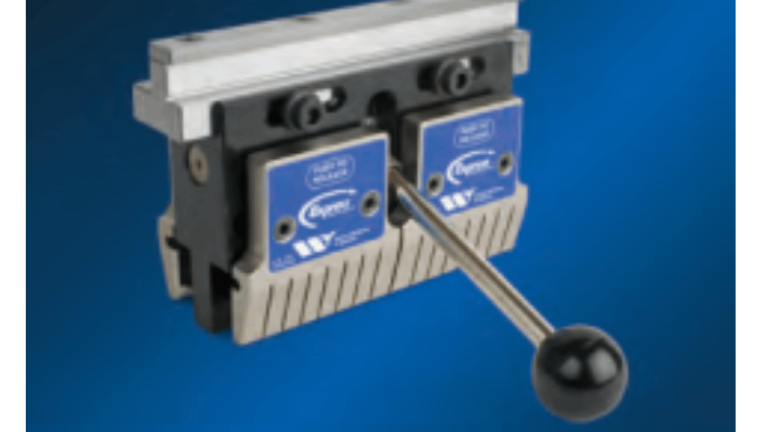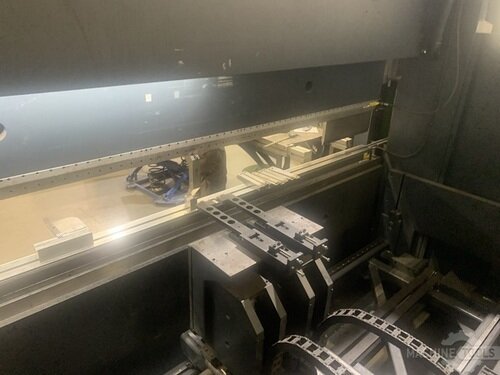Every day, I work alongside fabricators who are looking to boost productivity, precision, and profitability through smarter equipment decisions. In my role as Regional Sales Executive at Mac-Tech, I’ve seen firsthand how the right tube laser can transform a shop’s capabilities—whether it’s a family-run job shop or a high-output contract manufacturer. My approach is always hands-on: I listen to your goals, analyze your workflow, and recommend solutions that fit both your needs and your budget.
Understanding Fabrication Goals: Matching Tube Laser Capabilities to Your Shop’s Needs
The first step in choosing a tube laser is to get crystal clear about your fabrication goals. Are you primarily cutting simple tubes for structural frames, or do you need to handle intricate profiles and complex geometries? Entry-level tube lasers are ideal for straightforward cuts in standard shapes and offer a fast, affordable way to automate manual processes. On the other hand, if your projects demand advanced features—like beveling, intricate slotting, or multi-plane cuts—a more sophisticated system may be required.
Volume is another key factor. If you’re running short batches or prototypes, you may not need the throughput or automation of a high-end machine. But for shops aiming to scale up and win larger contracts, investing in a laser that can keep pace with demanding schedules is essential. By aligning your equipment capabilities with your business objectives, you’ll be well positioned to maximize your return on investment.
Evaluating Part Complexity: When Entry-Level Solutions Fall Short
Entry-level tube lasers shine when it comes to simple, repetitive cuts on round, square, or rectangular tubes. They’re reliable, efficient, and typically easy to program—even for operators with limited experience. However, as part complexity increases, these machines can quickly reach their limits. Features like angled cuts, complex contours, or the need to process non-standard profiles often require advanced motion control and more flexible fixturing.
If your customers are asking for parts with compound angles, intricate cutouts, or tight tolerances, a 5-axis tube laser becomes a game-changer. These machines allow for true 3D cutting, making it possible to process challenging geometries in a single setup. This not only improves accuracy but also reduces secondary operations and manual rework, leading to shorter lead times and higher part quality.
Volume Demands and Throughput: Aligning System Choice with Production Schedules
Production volume is a major consideration when selecting a tube laser. Entry-level models are well-suited for shops with modest throughput requirements or those just beginning to automate. They offer a lower initial investment and can dramatically reduce labor costs compared to manual sawing or drilling. However, as order sizes grow, bottlenecks can emerge—slowing delivery and limiting your ability to scale.
High-volume shops, or those anticipating rapid growth, should look at systems with greater automation and faster cycle times. Features such as automatic loading/unloading, nesting software, and high-speed servo drives help maximize throughput and minimize downtime. A 5-axis machine, while more of an investment, can handle a wider range of jobs without slowing down, ensuring your shop can keep up with customer demands now and in the future.
5-Axis Tube Lasers: Expanding Possibilities for Advanced Fabricators
For fabricators tackling complex assemblies, architectural components, or high-precision parts, 5-axis tube lasers open up a world of possibilities. These machines can cut at virtually any angle, enabling you to create joints and features that would be impossible—or prohibitively expensive—with manual methods. This flexibility is invaluable for industries like aerospace, automotive, and custom metalwork, where design innovation is a competitive advantage.
Beyond geometry, 5-axis tube lasers also improve process integration. They can perform multiple operations in a single pass, reducing handling and streamlining downstream workflows. While the upfront cost is higher, the ability to take on more diverse and demanding work can quickly translate to new business opportunities and a stronger bottom line.
Integrating Tube Lasers with Press Brakes and Tooling: Maximizing Workflow Efficiency
The benefits of a tube laser are amplified when integrated with press brakes, tooling, and other fabrication equipment. By designing parts with laser cutting and bending in mind, you can eliminate manual layout, reduce fit-up errors, and accelerate assembly. For example, precision notching and slotting done on the laser can serve as locating features for downstream bending or welding operations.
Modern software platforms make it easier than ever to synchronize cutting and forming processes. By using shared CAD/CAM data, you can ensure parts move seamlessly from laser to press brake, minimizing scrap and rework. This holistic approach to workflow design not only boosts efficiency but also delivers higher-quality products with less labor.
Real-World ROI: Calculating Payback and Long-Term Value of Laser Investments
A tube laser is a significant investment, so it’s critical to understand how it will impact your bottom line. Start by calculating the payback period: factor in labor savings, reduced material waste, and new business opportunities that come from faster turnaround and greater part complexity. Many shops see payback in as little as 12–24 months, especially if they’re replacing multiple manual operations.
But the real value goes beyond the initial payback. A well-chosen tube laser can unlock new markets, increase quoting speed, and improve customer satisfaction through consistent quality and on-time delivery. By viewing your purchase as a long-term strategic asset, you’ll be better equipped to justify the investment and plan for sustainable growth.
HSG TS2 HIGH SPEED TUBE FIBER LASER CUTTING MACHINE
R1 HIGH-SPEED TINY TUBE LASER CUTTING MACHINE
- Follow-up support for high precision
- Efficient multi-load loading
- Chuck jumping for short trailings
- Intelligent Bus operating System
Navigating Total Cost of Ownership: Beyond the Purchase Price
When comparing tube lasers, it’s tempting to focus solely on the sticker price. However, the true cost of ownership includes maintenance, consumables, software updates, and operator training. Entry-level machines may have lower upfront costs but can lack the durability or support needed for demanding applications. Conversely, premium systems often come with robust service agreements and longer intervals between maintenance.
Energy efficiency, spare parts availability, and upgrade paths are additional factors to consider. A machine that’s easy to maintain and backed by responsive local support can minimize downtime and ensure you’re getting the most from your investment over the long haul.
Hands-On Demos and Relationship-Driven Support: Why Local Expertise Matters
Choosing a tube laser isn’t just about specs or features—it’s about finding a partner who understands your business and stands behind their equipment. That’s why I always encourage customers to schedule hands-on demos and facility tours. Seeing a machine in action, running your own parts, is the best way to gauge performance and ease of use.
Equally important is post-sale support. At Mac-Tech, we pride ourselves on building long-term relationships, offering training, troubleshooting, and application advice whenever you need it. This local expertise ensures you get the most from your investment and can adapt as your needs evolve.
Making the Right Choice: Practical Steps for Confident Equipment Selection
Start by mapping out your current and future production needs, focusing on part complexity, material types, and expected volumes. Consult with your team—operators, engineers, and managers—to identify workflow pain points and wish-list features. Then, engage with trusted equipment partners to compare solutions, request sample cuts, and discuss integration options.
Finally, don’t rush the process. Take time to evaluate total cost of ownership, support resources, and upgrade potential. By making an informed, strategic decision, you’ll be setting your shop up for long-term success—and ensuring your tube laser investment delivers maximum ROI.
Frequently Asked Questions
How do I know if I need a 5-axis tube laser or if entry-level will suffice?
If your parts are simple and volumes are moderate, entry-level may be enough. For complex geometries, angled cuts, or high-mix/high-volume work, 5-axis is often the better choice.
What is the typical payback period for a tube laser investment?
Most shops see payback in 12–24 months, depending on labor savings, increased throughput, and new business opportunities.
Can a tube laser be integrated with my existing press brake and tooling?
Yes, with the right software and workflow planning, tube lasers can be seamlessly integrated to maximize efficiency and precision.
How important is local support after installation?
It’s crucial—local expertise ensures quick troubleshooting, operator training, and long-term reliability.
What hidden costs should I watch out for when buying a tube laser?
Consider maintenance, consumables, software, and training—not just the purchase price.
Will a tube laser help me win new business?
Absolutely—expanded capabilities and faster turnaround times can open doors to new customers and markets.
Get Weekly Mac-Tech News & Updates








